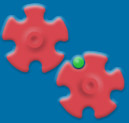The body (w)hole: Folk Art in the Digital Age
In 1980, I heard Martin Bartlett define Folk art as having grown out of a
non-academic, community based tradition. The creator, usually without training produces the work from local, readily available materials.
Bartlett made the argument that a "$10.00" Casio keyboard is the folk instrument of our technological society.
His argument was based on accessibility of the keyboard and the lack of virtuosity needed to interact with or play the
instrument.
In 2000, Laura Marks speaking in Montreal, used the same definition to
illustrate how the ASCII artists were contemporary folk artist.
She pointed out a collective in England, www.lowtec.org that received cast-off computers from companies distributed them back in the arts community thereby making computers a readily available material.
I would like to suggest that The body (w)hole is an example of electronic
folk art. I have created a camera using photo
cells and a monitor using LED.
The material is assembled not on a circuit
board but free hand allowing the colours, shapes and lines of the electronic components to dictate aesthetics of the
piece.
Assembling the material this way (manipulates the technology to) creates a work that looks "hand-made" in
hopes of humanising this sanitary material.
This work meets the criteria for folk art using materials and information
available at Radio Shack, at a cost of about $20.00. With only a little soldering experience the piece could be created
by anyone.
The Body (w)hole consists of two parts.
The first piece involves the camera being inserted into the front of a shirt with the monitor placed on the back.
A performance will take place in a darkened
space using the camera and monitor as a way of passing light through the body. The second piece uses the camera inserted into the shirt as a data collector.
Each one of the 36 photo-cell that makes-up the camera will stream data onto the
Scramble Bytes site. Once there the data
can be retrieved, mapped and placed in a context by anyone accessing the site.
For more info, please check out http://www.eciad.bc.ca/~dburg/
BACK

 * RESET
* RESET

 * RESET
* RESET